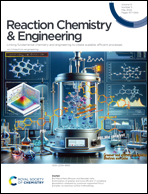BF3-promoted selective catalytic hydroboration of epoxides to primary alcohols†
Abstract
The novel non-metal-catalyzed hydroboration of epoxides has been devised to produce primary alcohols with exceptional yields and selectivity. Recognized as environmentally friendly options, both the homogeneous catalyst BF3·Et2O and the heterogeneous catalyst BF3/HY exhibited remarkable catalytic activities in this process. Notably, BF3·Et2O demonstrated excellent catalytic performance in the presence of HBpin at room temperature; various alkyl- and aryl-substituted primary alcohols could be detected with high yields. Based on the remarkable catalytic activity exhibited by BF3 species and our previous research on the supported solid acid catalyst BF3/HY, the evaluation of BF3/HY was subsequently conducted as a progression of our previous work. As anticipated, the effects of hydroboration proved to be ideal. Additionally, the results from heterogeneous catalytic reactions verified the recyclability and sustainability of BF3/HY for hydroboration. Specifically, high primary alcohol selectivity was detected in these above two systems, without any secondary alcohols present, and alcohols could be obtained without the need for acid or base hydrolysis reagents, as well as protracted hydrolysis procedures. All these findings provided innovative insights and methodologies for hydroboration of epoxides to alcohols.



 Please wait while we load your content...
Please wait while we load your content...